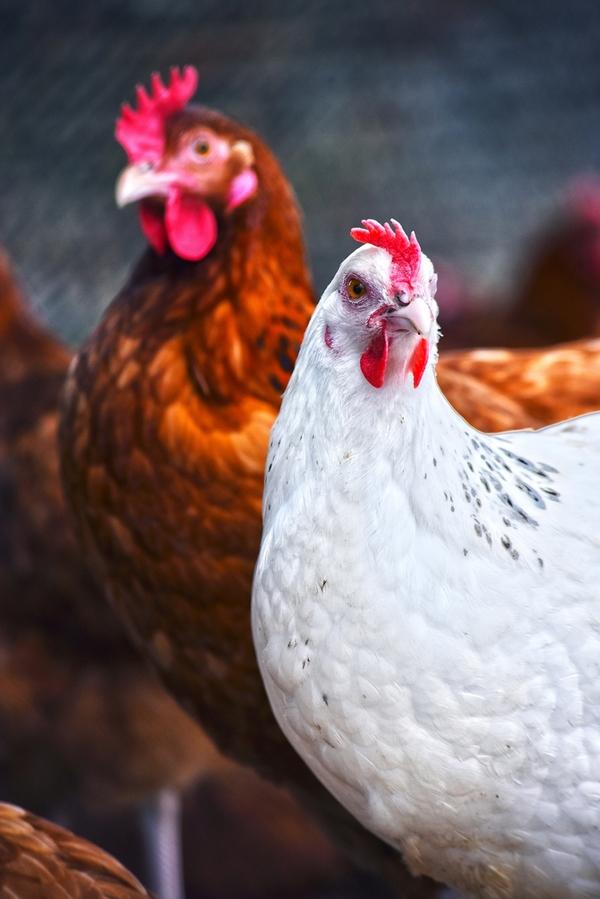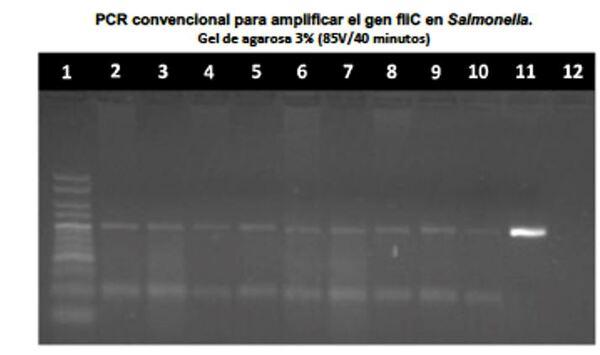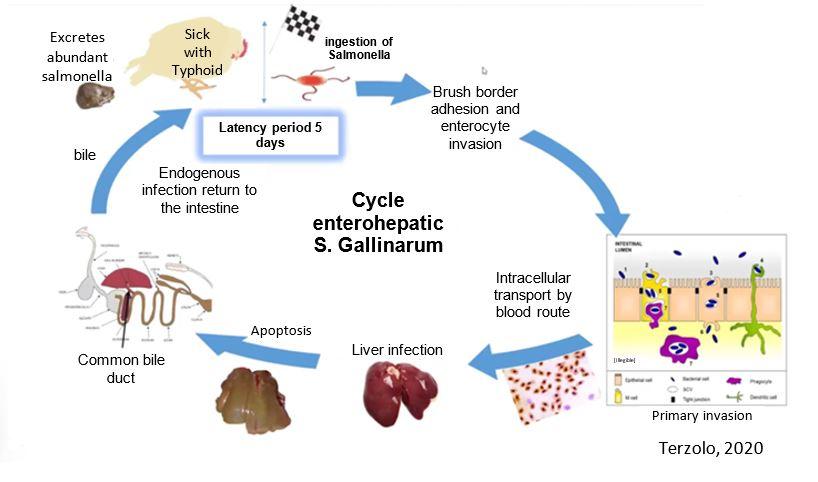
Content sponsored by:
Calier
Fowl typhoid: a very current headache. Effective vaccination strategies against this avian salmonellosis
Published: February 22, 2022
By: Laboratorios Calier

The emergence of fowl typhoid in poultry production systems in both meat and egg-producing birds has resulted in substantial losses for the poultry industry worldwide. The losses are not only due to the increase in the mortality of birds in different stages of life, but they also lead to high costs in the treatments that are carried out under the watchful eye of the regulatory agencies in those countries where this avian salmonellosis is declared. Another negative consequence implicit in antibiotic therapy is the rapid emergence of resistance to antimicrobials by the aetiological agent: Salmonella gallinarum.
Undisputably more important is the contamination with traces of antibiotics in products of avian origin that reach consumers' tables, contributing "per se" to the increase in the rate of bacterial infections in humans, owing to the transmission of resistance genes to other bacterial groups coexisting with our species.
The appearance of the strain of Salmonella gallinarum "rough" (9 R) marked an important milestone in the control of avian salmonellosis when it occurs in an acute or super-acute form on a farm, which allows us to infer that it should be used as an emergency vaccine. It is recommended that it be administered strictly subcutaneously, after meeting strict purity and concentration requirements. (CFU/dose). Due to the foregoing, plus other aspects of a biological nature that surround the use of this antigen and which are the subject of technical discussion, it is not recommended for the vaccination of breeders or that it be established as part of a permanent plan to control avian salmonellosis caused by salmonella typhi. The ability of Salmonella gallinarum to invade cell groups of the immune system, where it is retained to later re-emerge and invade cells of the target organs (liver, bone marrow, spleen and kidney), is one of its biological characteristics (Chart 1). The cells of the immune system that carry the bacteria are the main source of reservoir and contamination of host cells and a source of horizontal contagion in flocks of birds. Vaccination with PRIMUN SALMONELLA E plus SALMONELBAC seeks to adequately train the immune system for the activation of the specific antigenic response, not only humoral, but also cellular, which is considered the main way of protection against this entity and it is precisely this pathway that is blocked in natural infection due to the lack of antigenic recognition by the immune system.
Chart 1: Contamination cycle and enterohepatic circulation of Salmonella gallinarum
Currently, despite the fact that more consistent plans have been deployed for the control of fowl typhoid, including, among other aspects, rigorous cleaning and disinfection practices, management of stress factors, nutritional control and competitive exclusion through the use of various types of additives as part of the management of liver-intestinal integrity, these practices have not been able to mitigate mortality subsequent to contagion with the microorganism. In addition to the use of the 9 R vaccine, which has proven to be highly efficient in emergency practice, but which in the medium term brings an increase in mortality due to its level of pathogenicity as a living organism (Chart 2).
Heterologous immunisation has become the axial tool of this avian salmonellosis around which the holistic control strategy must revolve; the use of a vaccine programme with a mix of adequately adjuvated live and inactivated antigens containing Salmonella enteritidis plus Salmonella gallinarum, has been successful in a long-term control programme, without the harmful effects that vaccination with the rough strain of Salmonella gallinarum 9R brings, which allows its risk-free application to both light and heavy breeders as well as commercial birds.
Chart 2: Behaviour of vaccination plans against SG
The mixed vaccination strategy using live and inactivated antigens during the initiation and rearing phases of long-lived birds, results in an adequate training of the cells of the immune system that can serve as a reservoir for the field strains of Salmonella gallinarum; a greater antigenic presentation capacity is generated, not only through the activation of phagolysosome formation in B lymphocytes and macrophages, but also through the activation of surface molecules such as TLR 4 in macrophages, making them more capable in the functions of phagocytosis and antigenic presentation; the ability to activate themselves in an autocrine manner, and other cells in a paracrine manner, is also increased through the expression of cytokines, which positively regulate the immune response against micro-organisms and, in this case, against Salmonella gallinarum.
Chart 3: Electrophoresis product of triplex PCR amplification for analysis of biovars S. gallinarum, S. pullorum and 9R vaccine in a clinical case in Colombia
The use of the rough 9R strain vaccine was effective in reducing mortality in flocks declared clinical for fowl typhoid; nonetheless, after a certain period of being used as a vaccine in a
continuous immunisation programme, an increase in the mortality indicator was evidenced, with coexistence of smooth field strains and the rough vaccine strain in the tissues being found (Chart 3).
In a field case in Colombia, with laying birds of the same origin, it was decided to employ a mixed immunisation in the start-up phase of the birds using three doses of live S. enteritidis metabolic mutant vaccine (PRIMUN SALMONELLA E), together with two doses of bivalent inactivated vaccine containing S. enteritidis plus S. gallinarum adsorbed in aluminium hydroxide (SALMONELBAC HIDROSA). The applications were on day 1, week 4 and week 14 for PRIMUN SALMONELLA E. The two doses of SALMONELBAC HIDROSA were administered subcutaneously at weeks 10 and 14. A booster dose with PRIMUN SALMONELLA E was administered orally in water in adult birds when the nutritional phase was changed from post-peak to the subsequent phase, without finding clinical evidence of deterioration of the birds or evidence of excretion of the vaccine bacteria in the egg or the structures thereof. It is worth clarifying that around 40% of the vaccinated flocks showed evidence by molecular analysis that they were infected (Chart 4). The test used was real-time PCR complemented by the detection of conserved genes and characterised by molecular restriction analysis techniques. The result of the control strategy using mixed immunisation was satisfactory in the long term for the two groups of birds (infected without symptoms and free) characterised by the molecular technique briefly mentioned in this document.
Chart 4: RT-PCR amplification in one-day-old tissue

Electrophoresis and RT-PCR result in a sample from zone 4 positive for Salmonella gallinarum in 1-day-old birds taken from the arrival boxes in the country of destination. Confirmation was made using the RFLP method (result is not included)
Courtesy: R. Villareal, E. Murillo, H. Durango, H. Morales (2017)
Courtesy: R. Villareal, E. Murillo, H. Durango, H. Morales (2017)
Calier, takes a step forward in this control strategy against avian salmonellosis with vaccination programmes that address the problems of fowl typhoid but which also address the problems of zoonotic salmonella, such as Salmonella enteritidis, of vital importance in the control of food poisoning.
Related topics:
Influencers who recommended :
Jesús RubioRecommend
Comment
Share

Would you like to discuss another topic? Create a new post to engage with experts in the community.






